The Robot Revolution: The Top 10 Robotics Applications, Part 2
Outstripping projected growth rates year after year, the global robotics market is expected to cross the $100 billion mark within the next five years.
Falling prices, improved safety and performance, and more interoperable components and software are fueling the surge in demand. Moreover, robotic technology is converging with advancements in other areas, including sensors, machine vision, haptics, and voice technology, expanding the scope of applications and tasks robots can achieve.
As robots and artificial intelligence further penetrate new industries, they will become an even more integral part of our daily lives. Understanding these new use cases and their facilitating technologies provides insight into the anticipated future directions and challenges for companies looking to drive the robotics revolution.
In this second post of the series, we share the top five best-selling robotics segments, their chief challenges, and the innovations that can accelerate their adoption.
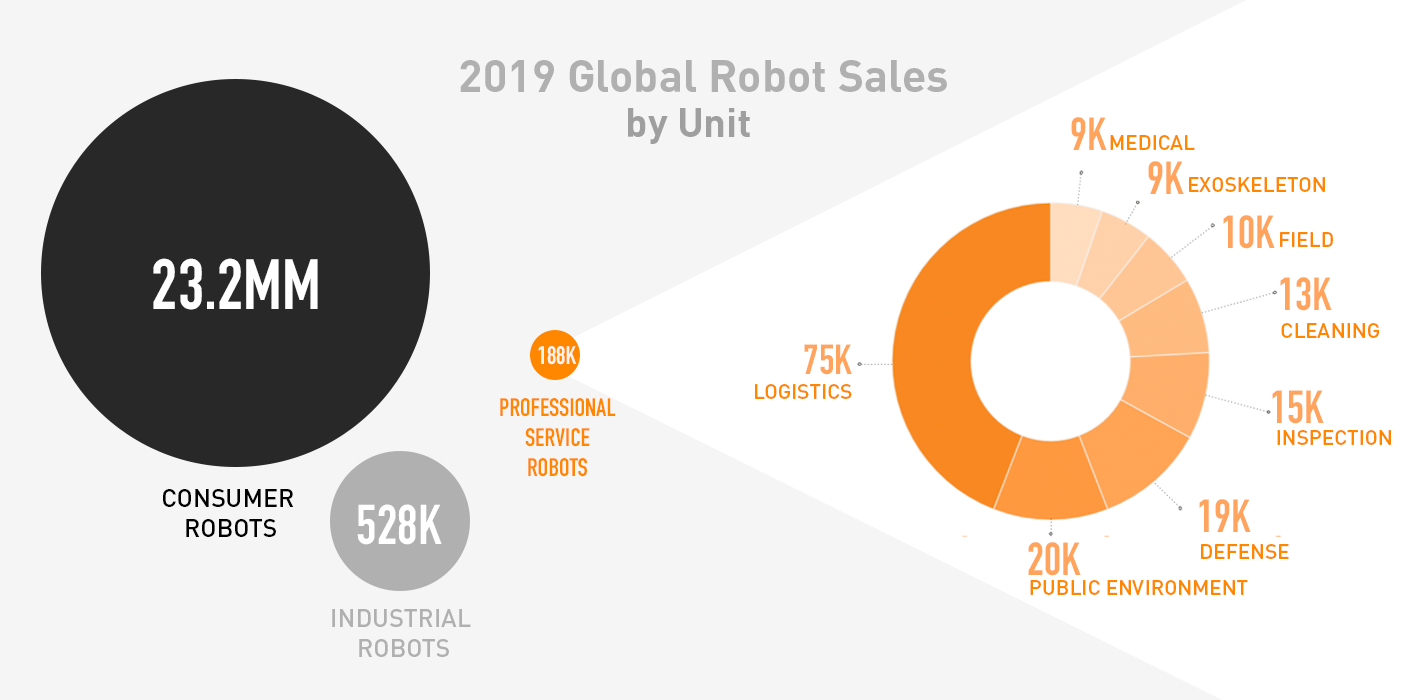
5. Security and Defense Robots
The defense sector continued to be a top market for robots in 2019, making up 15% of the total sales of professional service robots. In addition, the drone market, worth $18B, is dominated by military applications. These robots increase soldier safety, reduce carry load, and provide situational awareness and support for reconnaissance and IED missions.
The Challenge
Primarily operating outdoors in uncontrolled, dynamic areas, these robots must have high mobility, autonomy, and tolerance for all-terrain operations and hostile conditions. Their software and mechanical design must equip them to balance, navigate, and adapt to environmental changes and 3D environments that are much easier for humans to understand. Moreover, as AI systems can be unreliable and prone to misunderstanding, autonomous military robots require greater governance and ethical considerations.
The Innovation
Our client Boston Dynamics’ earliest robot, Big Dog, was funded by DARPA to carry up to 340lbs while accompanying soldiers. Big Dog achieved quadrupedal balance on uneven ground with high relief because of the company’s strength in mechanics and controls.
For navigation, edge AI chips, which perform processor-intensive AI tasks on the actual robot, enable AI without a cloud connection. Their falling prices and rising power mean that defense robots in the field will be able to easily autonomously maneuver through unmapped environments.
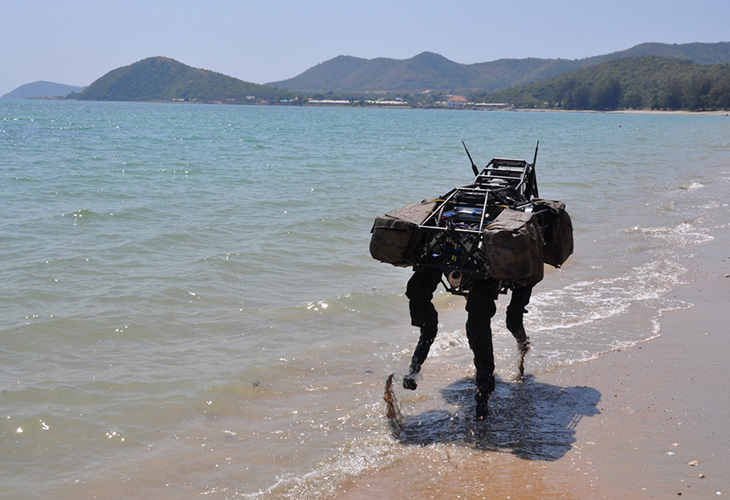
Boston Dynamic's quadraped Big Dog succeeded as a robotic pack mule that could dynamically retain its balance over unstable terrain.
4. Public Environment Robots
Robots in the public environment, including transport robots in hospitals, teaching assistant robots in schools, and service robots in malls, have grown more prevalent. Deployment of these robots grew by 44% in 2019; the coronavirus pandemic will continue to boost sales for retail and hospitality as robots are already put to use in Asia for temperature-taking and monitoring distancing.
SoftBank Robotics’ Pepper, used in over 100 stores in Japan, can interact with users and importantly, collect data that can be used to improve future interactions and re-marketing strategies.
Meanwhile, telepresence robots, including those developed by Boston-based Ava Robotics, enable increased interaction between humans, especially as physical distancing guidance continues to be observed. Ava's robots already allow doctors to virtually round COVID-19 wards.
The Challenge
Advancing robot cognition for better face-to-face interaction with humans is a crucial barrier to overcome. Conversing with and helping customers or users requires complex programming as well as strong interaction design that can be iteratively evaluated through usability tests. Creating more fluid and accurate interactions is critical for humans to engage more with these robots.
The Innovation
Advances in machine learning techniques, especially natural language processing, are used to train robots to more effectively interact and converse with humans, helping guide them around an area or solve a problem. This evolution in technology should be accompanied by an evolution in creating an iconic form factor that can signify approachability without veering into the uncanny valley.
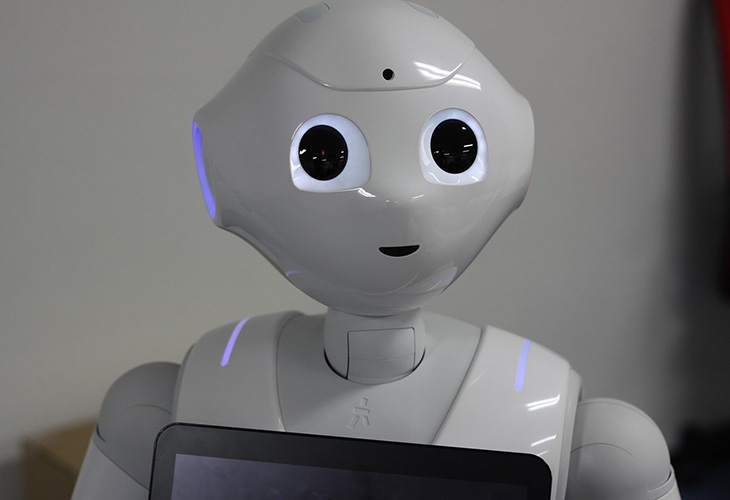
SoftBank's humanoid robot Pepper can be used in customer service, hospitals, and schools to guide and assist customers and users.
3. Fulfillment and Logistics Robots
As warehouse and logistics companies rush to meet consumer expectations of rapid delivery, they are increasingly turning to robots for increased speed, efficiency, and accuracy. Accounting for nearly half of all professional service robots sold in 2019, these robots include robotic drives, arms, and palletizers that perform tasks in inventory management, delivery, and fulfillment.
The Challenge
Warehouses are large, noisy, and continuously changing environments where everything, from people to pallets, is on the move. Robots need to recognize and intelligently adapt to shifting surroundings in order to maneuver safely around objects while still securely transporting large volumes and payloads of inventory.
The Innovation
Our client Locus Robotics, based in Boston, produces autonomous mobile robots (AMRs), equipped with a 3D-camera, sensors, and a computer to plan out its own path through a facility. Their navigation system enables a robot to recalibrate its route in real-time when it encounters unexpected obstacles. This technology allows more flexibility, faster deployment, and greater human collaboration within warehouse tasks, ultimately increasing efficiency.
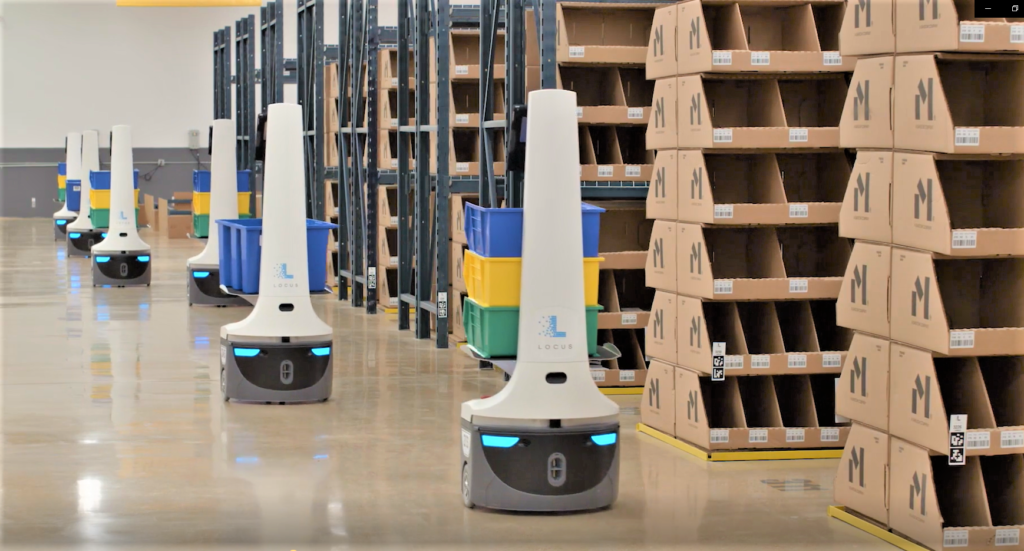
Locus Robotics autonomous mobile robots communicate with each other and humans to map efficient travel routes through a warehouse, reducing picking time and increasing efficiency.
2. Industrial Robots
Industrial manufacturers were the earliest adopters of commercial robots, employing them on assembly lines as far back as the 1960s. Demand for these robots has stayed high in the past decade, with the market worth $13.8B USD. Designed for repetitive or hazardous tasks that require super-human strength or endurance, industrial robots continue to be commonly used for machine tending, welding, and assembly.
The Challenge
Traditional industrial robots must be caged or fenced to protect worker safety, which limits their flexibility and opportunity to collaborate with human workers.
The Innovation
The integration of computer vision, machine-learning, failure prediction algorithms, and safety control systems like the Veo FreeMove developed by our client Veo Robotics, enable humans to safely interact with traditional industrial robots.
Meanwhile, collaborative robots, pioneered by our client Rethink Robotics’ Baxter, allow humans and robots to work side-by-side. At MANTA, we work to design with approachable forms and intuitive user interfaces that optimize usability and facilitate collaboration with humans.
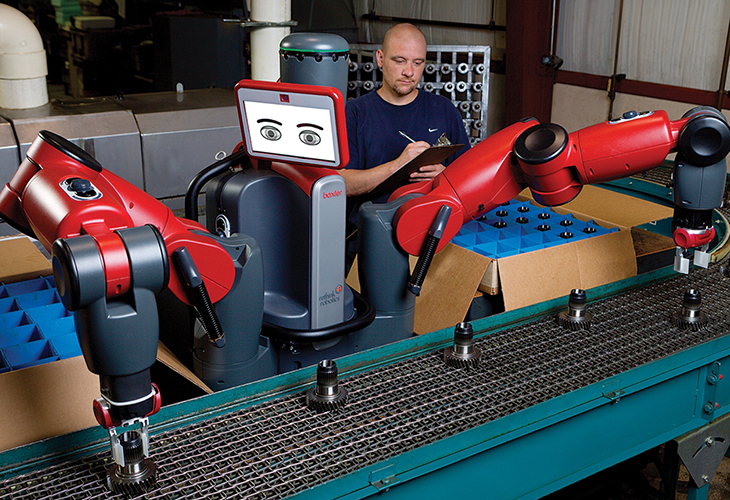
We worked with ReThink Robotics to develop Baxter as an easily programmable and responsive robot that signified it understood commands by nodding its display.
1. Consumer Robots
Since 2012, 40% of new robotics companies have been in the consumer sector, a market worth $5.7B USD. Out of the almost 22 million robots sold globally in 2019, 97% were consumer robots. The vast majority of these perform domestic tasks, as evidenced by the popularity of our client iRobot’s Roomba. However, companion and elder care robots, like ElliQ from Intuition Robots, have strong potential for growth.
The Challenge
Cleaning and gardening robots, such as the Tertill weeding robot, must be able to navigate and perform in highly dynamic, unstructured environments, which is challenging to solve for at a consumer-friendly price point. Additionally, more than any other segment, consumer robots must be highly intuitive to use and interact with, as well as adept at responding to humans in their lived environment safely.
The Innovation
Consumer robots need easier and better human-machine interaction, whether through optimizing the usability of their controls and physical user interface, or by using newer technologies such as voice. For instance, by establishing rules for robot-human conversations, scientists are laying the groundwork for humans and robots to interact in a truly natural, conversational manner.
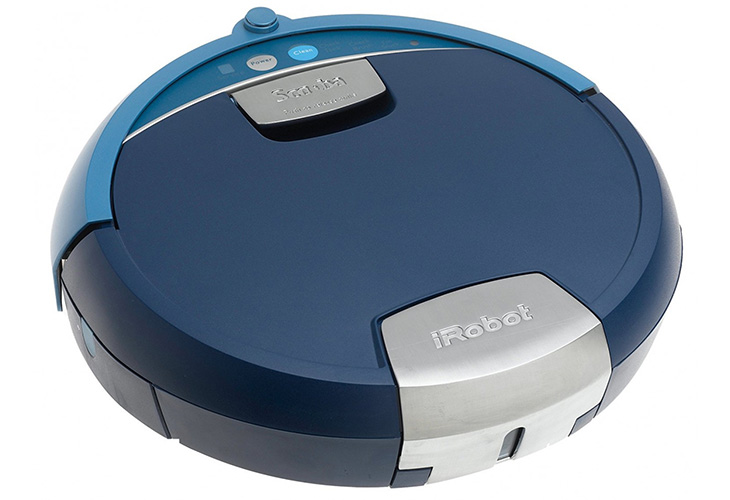
In designing iRobot's Scooba, the company's first-generation floor-scrubbing robot, MANTA worked in-house with the company to create a test room to evaluate the robot's navigation and movement on wet floors.
How Will Your Robot Transform Industries?
Our experienced team of researchers, designers, and engineers can help you create a standout user experience, elegant enclosures, and cutting-edge mechanical and perception solutions for your robot - no matter the industry. Get started now.
